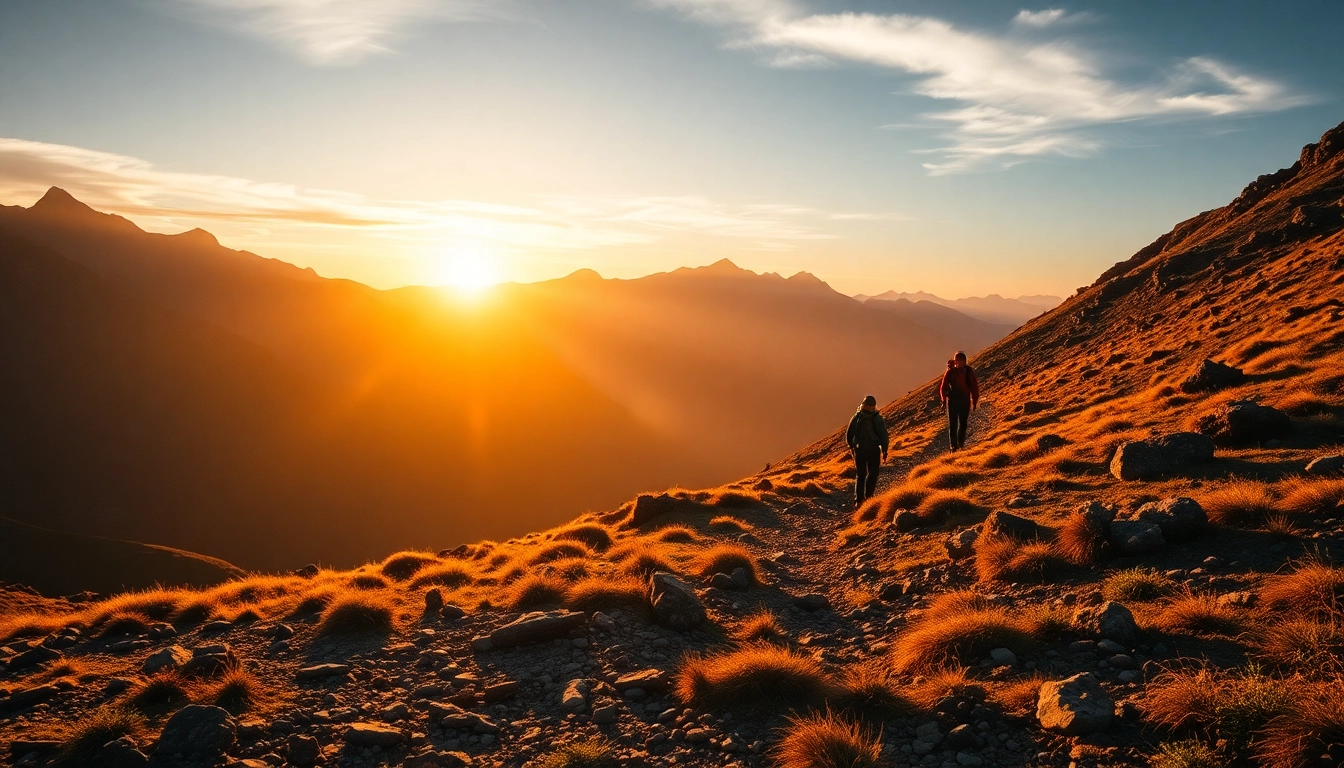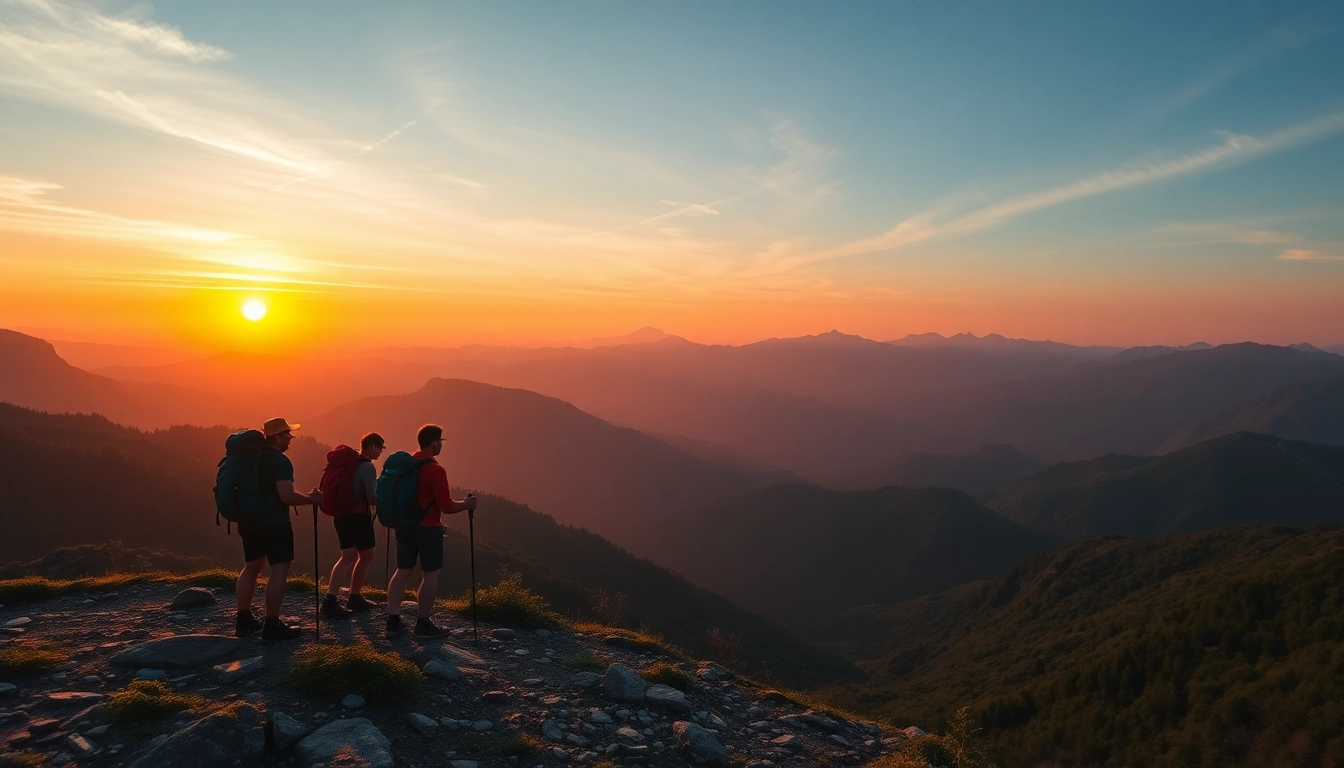1. Understanding Trekking: Definition, Differences, and Key Concepts
Trekking is an exhilarating outdoor activity that involves extended, often multi-day hikes through wild, natural environments. Unlike casual hiking trips, trekking challenges enthusiasts with rugged terrains, unpredictable weather conditions, and demanding physical endurance. The activity not only provides a deep connection to nature but also offers physical and mental health benefits, making it a popular pursuit for adventure seekers and nature lovers alike.
To truly appreciate the multifaceted nature of trekking, one must understand what differentiates it from other similar activities, such as hiking and climbing. This distinction is crucial for planning, safety, and maximizing enjoyment. For a comprehensive understanding, visit this trekking resource to explore diverse trekking opportunities across Indonesia’s extraordinary landscapes.
What Is Trekking? Clarifying the Activity
At its core, trekking is a long-distance, vigorous journey primarily undertaken on foot in natural settings that stretch over several days. It involves traversing various terrains—mountains, forests, arid deserts, or remote countryside—requiring participants to carry their gear, plan accommodations, and navigate through sometimes challenging environments. Trekking often emphasizes personal endurance, resilience, and a deep engagement with nature’s raw beauty.
The activity differs from typical hiking by its duration and complexity. While hiking usually refers to day-trips on marked trails within accessible areas, trekking can extend to weeks, traversing multiple ecosystems and cultural landscapes. As defined by the Cambridge Dictionary, trekking is the activity of walking long distances on foot for pleasure, often involving significant physical effort and planning.
How Trekking Differs from Hiking and Climbing
Understanding the distinctions among trekking, hiking, and climbing is essential for enthusiasts and novices alike:
- Hiking: Generally refers to walking on well-marked trails, usually for a few hours or half a day, primarily within national parks or recreational areas. Hiking is accessible and suitable for most fitness levels, emphasizing leisure and sightseeing.
- Trekking: Extends beyond day hikes, typically lasting multiple days. It involves more challenging terrains, such as mountain passes, dense forests, and unmarked routes. Trekking demands better physical fitness, mental preparation, and logistical planning, including accommodation and sustenance.
- Climbing: Focuses on ascending steep, vertical surfaces like mountains, rocks, or ice. This activity requires specialized skills, equipment (ropes, harnesses, ice axes), and training, making it more technical and dangerous than trekking or hiking.
Key Features of Trekking in Natural Environments
Trekking in natural environments embodies the adventure spirit—immersing participants in untouched landscapes, diverse ecosystems, and cultural heritage sites. Unique features include:
- Rugged Terrain: Traversing uneven surfaces, steep inclines, and unpredictable ground conditions.
- Extended Duration: Multi-day journeys requiring planning for shelter, food, and water.
- Environmental Diversity: Experiencing different climates, flora, fauna, and topographical features.
- Cultural Encounters: Engaging with Indigenous communities and local cultures along the route.
These features make trekking a holistic experience, blending physical challenge with cultural appreciation and environmental stewardship.
2. Planning Your Trekking Trip in Indonesia
Selecting Destinations: Mountains, Forests, and Hidden Trails
Indonesia, with its vast archipelago, offers a plethora of trekking destinations suitable for all levels—from beginner explorers to seasoned adventurers. Popular options include:
- Mount Rinjani (Lombok): Indonesia’s second-highest volcano, offering challenging climbs, stunning crater lakes, and panoramic views.
- Bali’s Hidden Trails: Through rice terraces, jungle forests, and remote villages, perfect for culture-themed treks.
- Sumatra’s Gunung Leuser National Park: Known for its rich biodiversity and opportunities for jungle trekking.
-
Papua’s Trekking Routes: Remote and less traveled, these routes showcase indigenous cultures and pristine environments.
Preparing Essential Gear and Equipment
Proper gear is vital for safety, comfort, and success in treks. Basic essentials include:
- Footwear: Durable hiking boots with ankle support and appropriate tread.
- Clothing: Moisture-wicking layers, waterproof jackets, and sun protection.
- Backpack: Ergonomic, with enough capacity for gear and supplies.
- Navigation Tools: GPS device, compass, and detailed maps.
- Camping Equipment: Tent, sleeping bag, and cooking gear if camping.
- Additional Items: First aid kit, headlamp, multi-tool, water filtration systems, and sufficient food supplies.
Physical and Mental Preparation for Long Trekking Journeys
Trekking requires significant physical stamina and mental resilience. Preparation should include:
- Fitness Regimen: Cardiovascular exercises, strength training, and endurance hikes.
- Skill Development: Navigation, basic camp setup, and first aid training.
- Mental Readiness: Setting realistic expectations, developing patience, and practicing mindfulness to cope with physical exhaustion and unforeseen challenges.
- Acclimatization: Gradually increasing activity intensity and altitude adjustment if trekking in highlands.
Advanced planning and training ensure a safer and more fulfilling trekking experience in Indonesia’s diverse terrains.
3. Best Practices for Safe and Enjoyable Trekking
Navigation Skills and Trail Markings
Navigational competence is essential for avoiding getting lost, especially in unmarked or remote trails. Key skills include reading maps, using GPS devices, understanding natural trail markers, and employing compass bearings. Engaging with local guides who know the terrain enhances safety and enriches your experience.
Environmental Conservation and Responsible Trekking
Protecting natural habitats is a priority for sustainable trekking. Adhere to Leave No Trace principles: minimize waste, avoid disturbing wildlife, stick to marked trails, and refrain from collecting plants or artifacts. Promoting environmental awareness among fellow trekkers helps preserve Indonesia’s pristine environments for future generations.
Local Guides and Supporting Eco-Tourism Initiatives
Hiring local guides not only ensures better navigation and safety but also supports community development. Many eco-tourism programs in Indonesia empower indigenous populations through responsible tourism practices, ensuring both the environment and local cultures benefit. When trekking, prioritize certified guides and community-led ventures to contribute meaningfully to local economies.
4. Cultural Insights and Local Attractions Along Trekking Routes
Experiencing Indigenous Cultures and Traditions
Indonesia’s diverse cultures add rich layers to trekking adventures. Along various routes, trekkers can encounter traditional ceremonies, local crafts, and indigenous lifestyles. For example, trekking in the highlands of Bali or Lombok introduces travelers to local villages where customs remain unchanged for centuries, offering meaningful cultural exchanges.
Popular Trekking Routes with Scenic and Cultural Highlights
Some routes stand out for their combination of scenic beauty and cultural significance:
- Mount Rinjani Trek: Witnessing sunrise over craters, lake views, and visits to local Sasak villages.
- Bali’s Mount Batur Trek: An active volcano trek offering stunning sunrise vistas and nearby cultural sites.
- Sumatra’s Bukit Lawang: Jungle treks that lead to orangutan sightings and traditional Sumatran villages.
Engaging with Local Communities Respectfully
Respect and cultural sensitivity are vital during treks. Interact politely, seek permission before photographs, and participate in local activities responsibly. Supporting community-based tourism ensures authentic experiences while empowering local populations to retain their cultural heritage.
5. Enhancing Your Trekking Experience: Tips and Performance Metrics
Improving Endurance and Technique
For continuous improvement, focus on building cardiovascular capacity and strengthening core and leg muscles. Technique-wise, learn proper walking posture, pacing strategies, and efficient pack carriage to reduce fatigue. Incorporate interval training and hiking on varied terrains to simulate expedition conditions strategically.
Tracking Progress and Setting Achievements
Use GPS devices, fitness trackers, or journaling methods to monitor mileage, elevation gain, and health metrics. Setting clear goals—such as completing specific routes or improving time efficiency—helps maintain motivation and provides a sense of accomplishment.
Post-Trek Recovery and Gear Maintenance
After each expedition, prioritize rest, stretching, and nutrition to aid recovery. Conduct thorough gear inspections and cleaning to prolong equipment lifespan. Sharing experiences and lessons learned can also refine your skills for future adventures.
Ultimately, well-planned preparation, continuous skill development, and a commitment to responsible tourism elevate your trekking journeys across Indonesia’s breathtaking landscapes.

